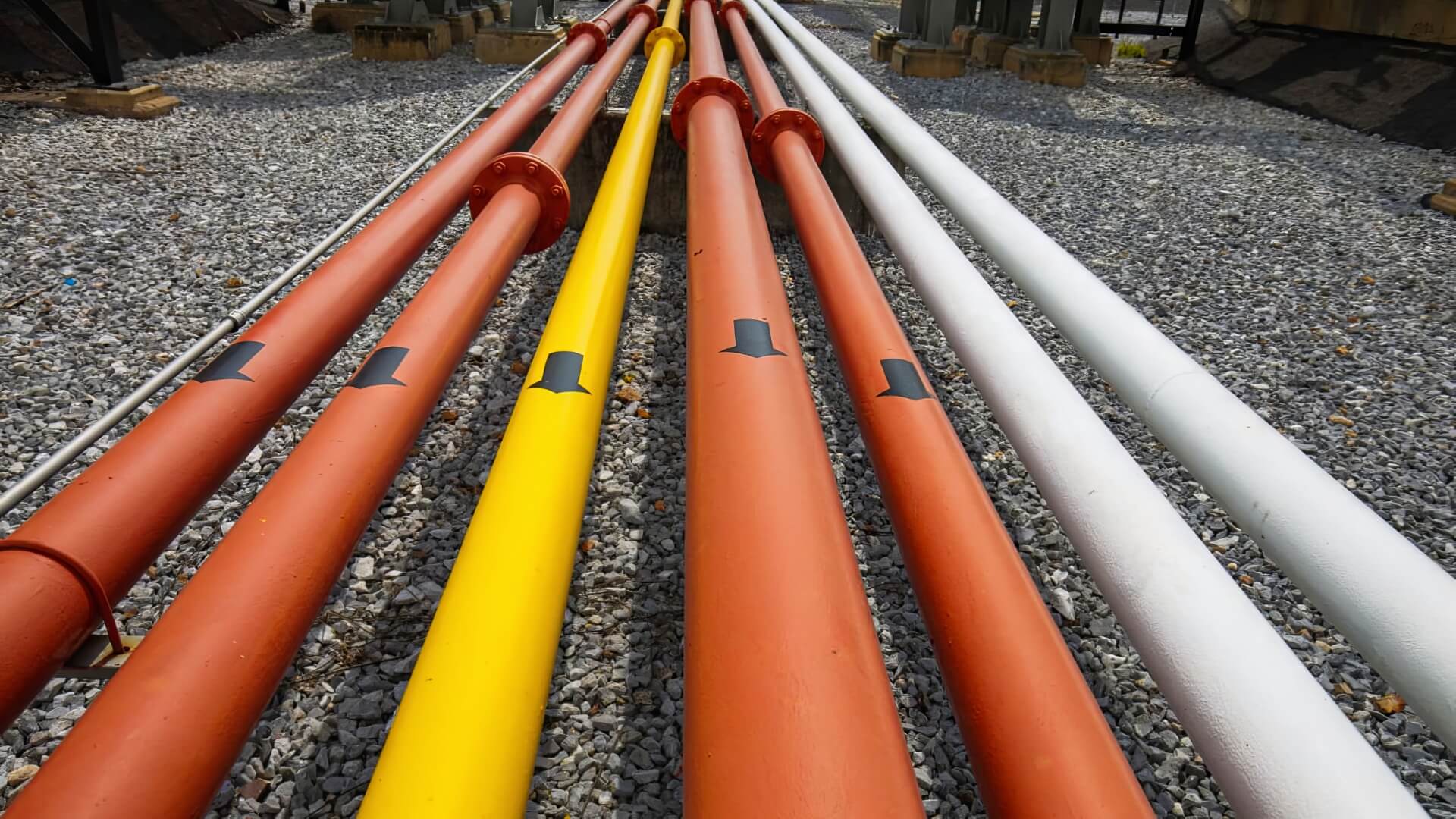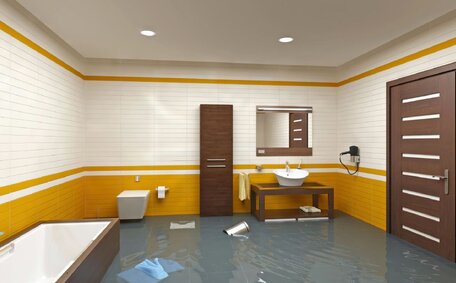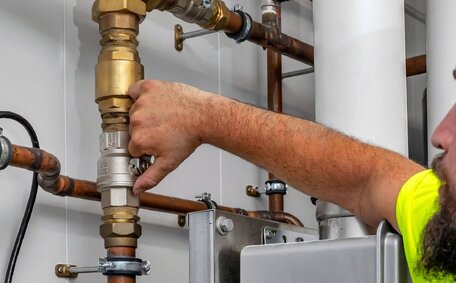Understanding Sewage Backups: Causes and Signs
Sewer backups occur when wastewater cannot flow away, causing sinks, toilets, tubs, and floor drains to back up into your home. The most common causes of sewer issues include invasive tree roots, non-flushable items such as fats oils grease, sanitary products, and toilet paper human waste that clogs the down drain, damaged sewer lines, and sewer systems overwhelmed by heavy rainfall.
Signs of an imminent sewer backup include:
- Slow-draining sinks, tubs, or toilets often indicate clogged pipes
- Gurgling sounds from plumbing
- Foul sewage odours, especially from the floor drain
- Water pooling near clean out points signals potential plumbing issues
Wastewater backing up into your home, particularly the basement, presents urgent risks of contamination and water damage. Swift action is needed to stop further flooding, as sewer backup can specifically affect your floor drains and escalate quickly.
Immediate Response: What To Do When a Sewage Backup Occurs
If your home experiences a sewage backup, immediately:
- Cease all water usage to prevent further events that can back up sewage into your plumbing system. Turn off taps, stop laundry, dishwashing etc. to help keep your home safe from surges.
- Take measures to prevent sewer backup by addressing the most common causes and avoid any contact with sewage water due to its potential health hazards. Wear protective gear such as gloves, boots, and clothing when clearing blockages.
- Check your main electrical areas to see if they are impacted. Turn off power at the main switchboard if needed.
- Call professional Moorebank Plumbing on 1300 349 338 for emergency assistance. Alert us that a sewage backup situation is occurring.
- If safe, use a shop vac to address a sewage backup in the basement, effectively removing water to mitigate the sewage backup basement hazard. Do not use regular household vacuum cleaners.
- Ventilate rooms by opening windows if possible, especially in spaces where odours indicate a potential backup down your sewer lines.
- Contact your insurance agent to check policy coverage for sewage cleanup and repairs.
- Do not attempt to clean affected areas before speaking with emergency services about proper sanitisation methods.
A prompt response is crucial for understanding and preventing wastewater backflow, which is essential for mitigating flood damage. Our team can implement preventive actions like installing a backwater valve on the main line to prevent future invasions.
Safely Cleaning Up Sewage Backup Damage
Protect Yourself During Cleanup
During cleanup, it’s essential to protect against health hazards and prevent pipe damage from root encroachment. Wear waterproof boots, gloves, eye protection, masks and protective clothing to avoid contact with contaminated water.
Ensure good ventilation by opening doors and windows, and switch off electricity if wiring was submerged.
Step-by-Step Cleanup Process
Follow these steps for safe cleanup of affected areas:
- Extract standing water using a wet-vac or submersible pump.
- Discard porous materials like carpets, drywall, insulation and upholstered furniture that can’t be thoroughly sanitised.
- Clean hard surfaces with hot water and detergent before disinfecting with a solution of 1 cup bleach per 1 gallon of water.
- Allow surfaces to air dry completely before rebuilding or replacing absorbent materials.
- Address lingering odours by applying baking soda and activated charcoal after drying.
- If mould growth occurs, wear PPE during remediation and consider hiring professionals for large affected areas.
Seeking Professional Assistance
Extensive sewage flooding, especially if it overwhelms your basement, may require intervention by professional water damage restoration and plumbing services.
Professionals, equipped with the right tools, can swiftly tackle areas with water backup, employing industrial dryers and anti-microbial treatments for restoration. They can also fully sanitise areas, prevent mould issues, and confirm when spaces are safe to re-enter.
Preventing Future Sewage Backups
Several proactive measures can prevent backups from threatening your home’s plumbing integrity:
Inspect and Maintain Lines
Inspect your main sewer line and septic tank every 1-2 years for any root intrusions or damages. Avoid sewage backups by regularly removing blockages from oils and grease that may obstruct your sewer line.
Upgrade Outdated Plumbing
Modernize to plastic pipes to reduce the risk of damage from fats, oils, and root intrusion in your sewer system. During renovations, consider upgrading old pipes that may be vulnerable to fats and greases.
Install Protective Plumbing Devices
By including a garbage disposal with backflow prevention valves, overhead sewers, and backup sump pumps, you protect your home from wastewater backups, notably during municipal sewer line complications.
Be Conscious of What Goes Down Drains
To enact backup prevention, refrain from dumping grease down sinks or toilets to prevent solidification and clogging. Dispose of fats, oils, and food waste responsibly to keep your sanitary sewer system free from materials that can cause blockage in your pipes and result in drain clogs.
Reach out to Moorebank Plumbing for insight about sewer maintenance and customised sewage backup solutions that effectively shield your property.
Installing Backflow Prevention Devices
Devices such as backwater valves are crucial to prevent sewage and wastewater from reversing into homes. These units permit waste flow out of the dwelling while preventing reversal back into the interior pipes, protecting against circumstances where the system can damage your home’s foundation.
Types of Backflow Prevention
Common options include:
- Backwater valves - Allow wastewater to flow out but block backup floods that cause sewage issues from entering. Often one of the most recommended installations on the home’s main drain line.
- Overhead sewers and sanitary main flood prevention systems - Drain lines from fixtures in your home can be positioned higher than flood risk areas. Wastewater flows down to the main sewer but cannot reverse flood upwards.
- Backup sump pumps and enhanced drains, like French drains and other flood control systems, are effective in diverting sewage and pumping out infiltrating water.
Professional Installation
The proper installation of backflow devices requires consideration of the piping layout, yard drainage, venting, and compliance with Australian plumbing standards. This complex work requires qualified technicians.
Contact Moorebank Plumbing to schedule certified backflow preventor installation to protect against sewage system overflows.
When To Call a Professional Plumber
Identify Plumbing Emergencies That Demand Prompt Intervention
Professional assistance is essential for certain plumbing emergencies. Call Moorebank Plumbing immediately for issues like:
- A burst pipe can cause extensive flooding by forcing water throughout your home
- A gas leak posing fire or health risks
- A complete loss of running water in the building
- Sewage visibly backing up into sinks, tubs or toilets
Our team offers prompt, 24/7 emergency plumbing services to halt damage and restore safety.
Complex Installations or Inspections
It’s advisable to have seasoned plumbers handle tricky jobs like:
- Installing or servicing water heaters
- Fitting new piping and drainage systems
- CCTV drain inspections to locate pipe issues
- Installing backflow prevention devices to specification
Our fully licenced technicians possess the expertise needed to perform these tasks competently.
Sewage Backups Requiring Professional Cleanup
For large sewage spills beyond minor flooding, professional restoration services offer thorough decontamination and drying equipment unavailable to homeowners. This facilitates proper sanitisation and prevents lingering contamination issues.
Don’t hesitate to call our team for reliable assistance and services.
Protecting Your Home and Family
A failed sewage system can cause significant damage to your home and pose health and financial risks to your family. Understanding what births overflows, taking rapid action when they transpire, meticulously cleaning up afterwards, and embracing preventative steps can protect your haven from potential damage.
Avoid pouring grease down the kitchen sink and refrain from dumping fats and harsh substances down drains to prevent clogs and sewer backups. Have old sewer lines inspected and upgrade ageing infrastructure to prevent failures. Installing devices like backflow valves and overhead sewers according to plumbing specifications can help prevent sewage issues that could potentially clog your systems.
During an emergency overflow, immediately halt water flow and call Moorebank Plumbing for assistance. Our skilled technicians have the savvy to address urgent issues and can do what’s necessary to avert worsening backups.
For major floods beyond DIY handling, rely on professional restoration services for proper decontamination and drying equipment to sanitise your plumbing and affected areas. This ensures no lingering contamination issues remain behind walls or under floors before rebuilding.
Contact Moorebank Plumbing for routine maintenance, installations, and emergency response to protect your home and ensure your family’s health. For advice tailored to your property, don’t hesitate to get in touch with us.






